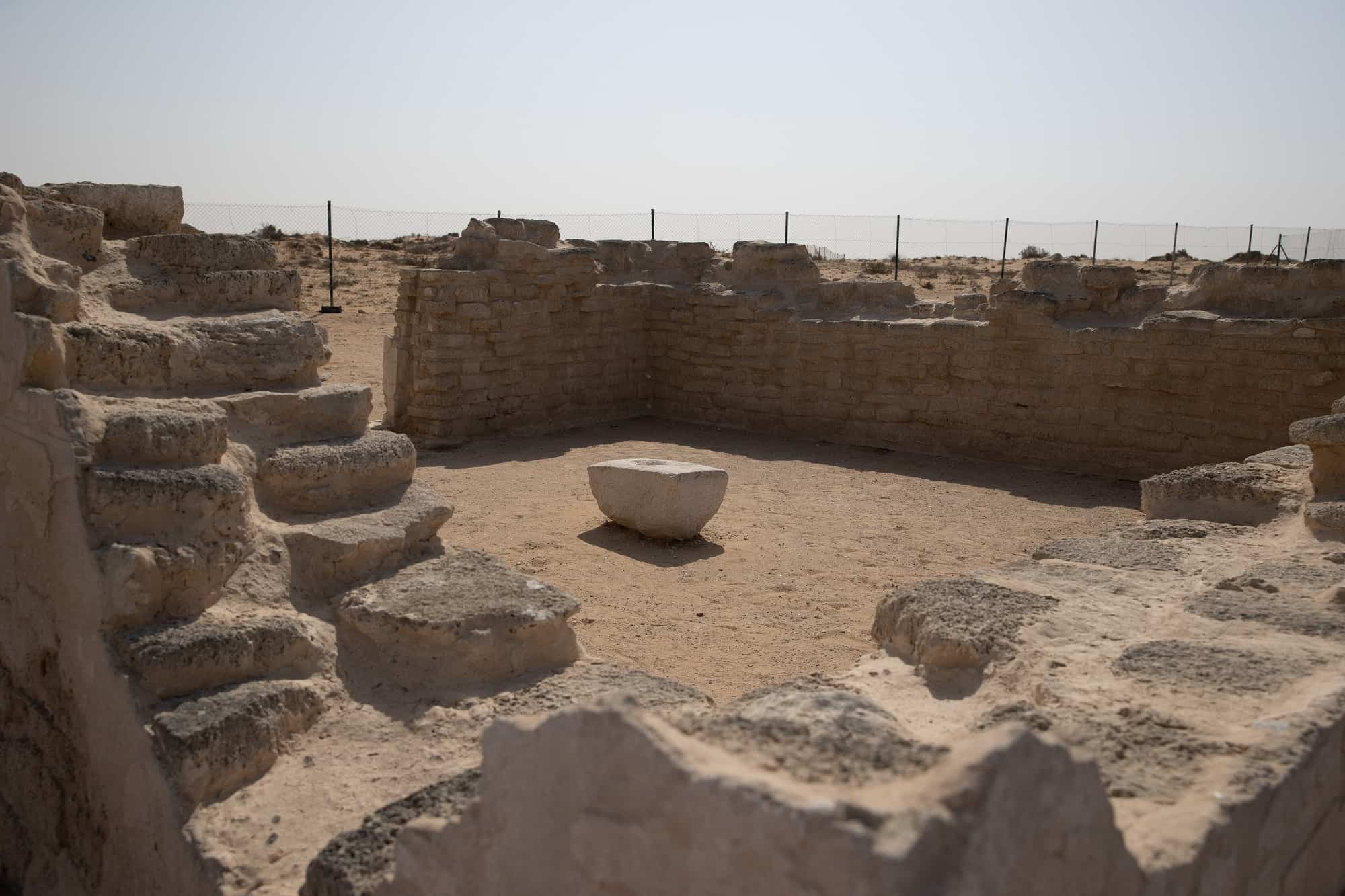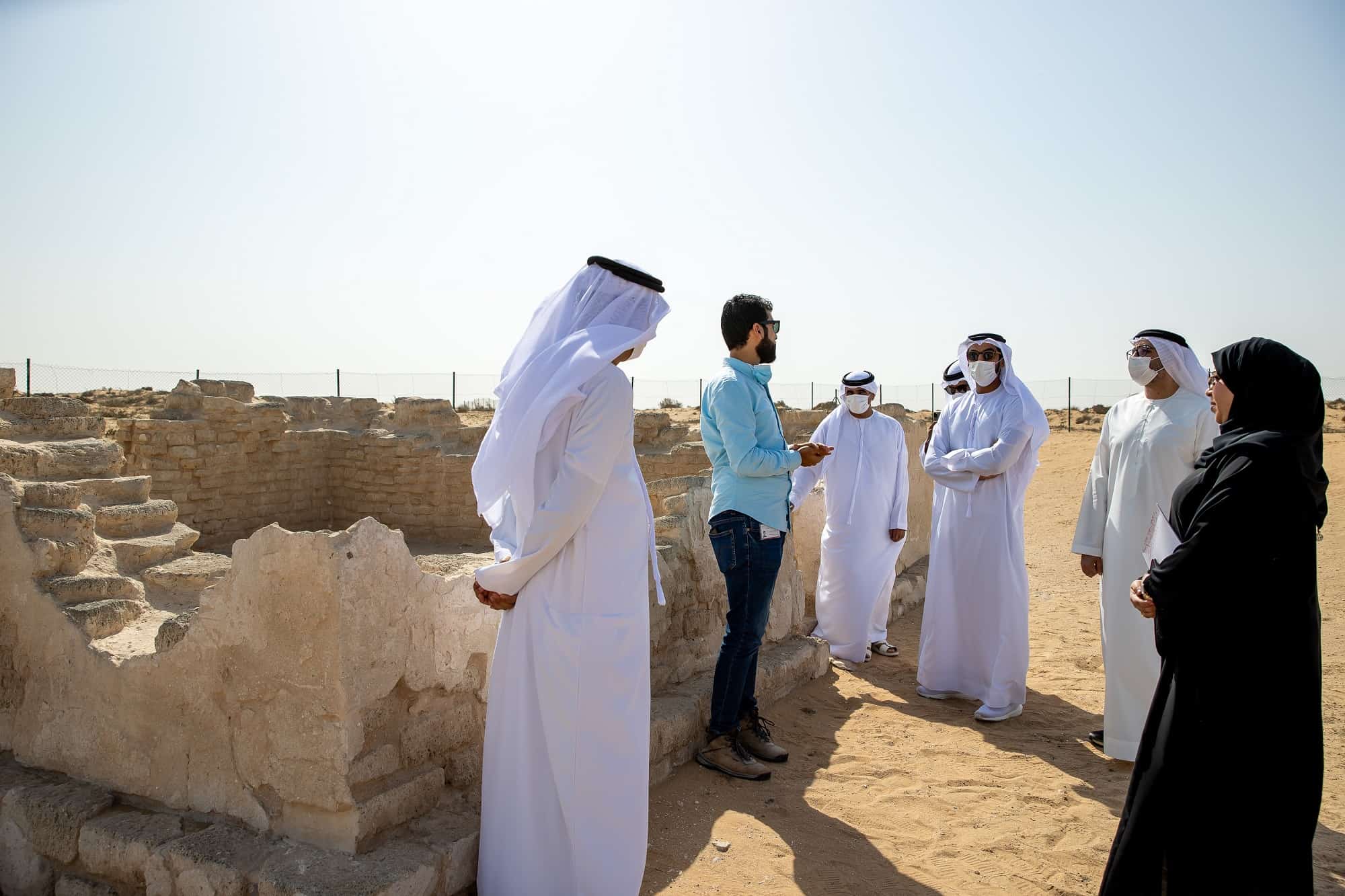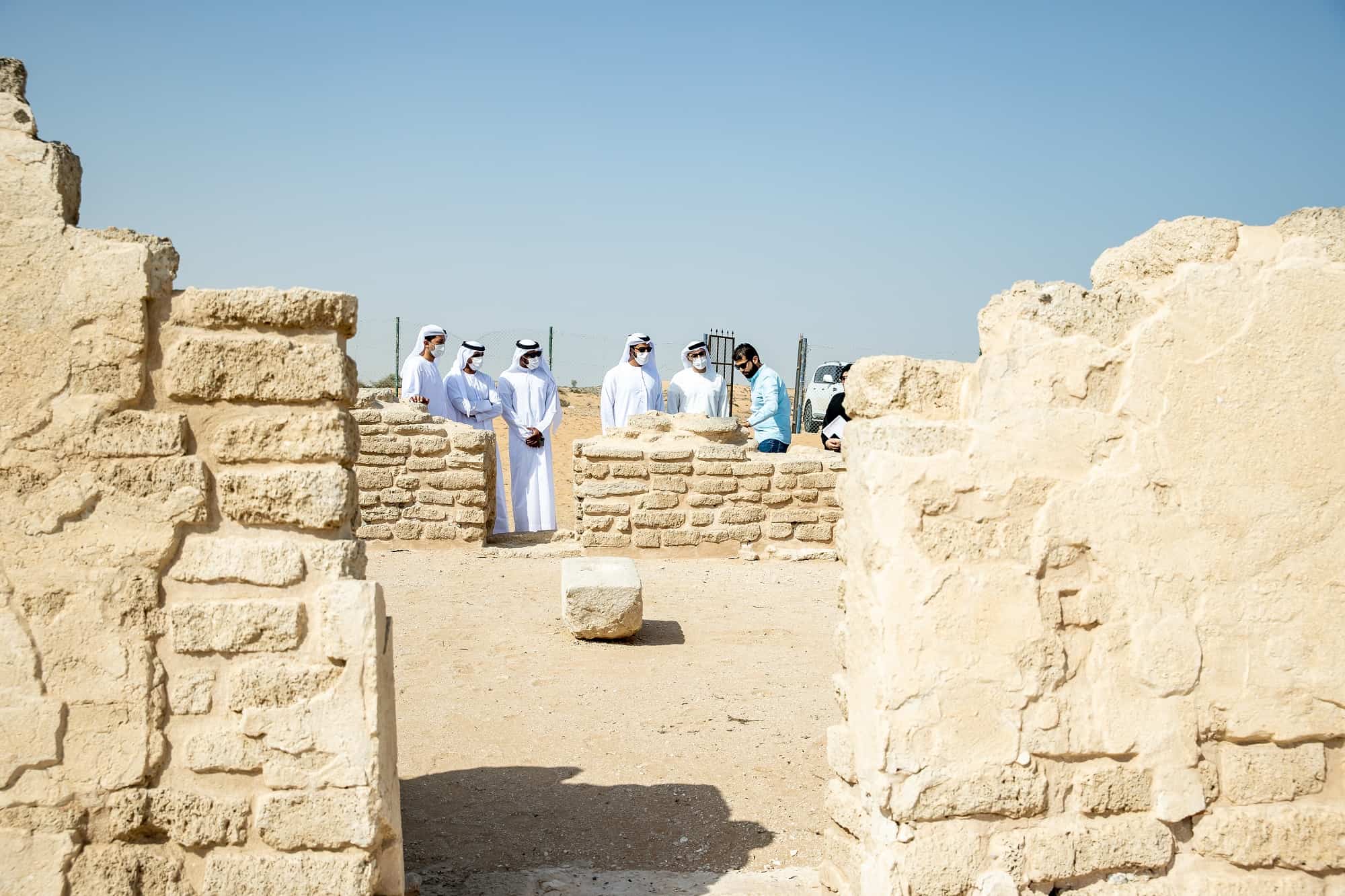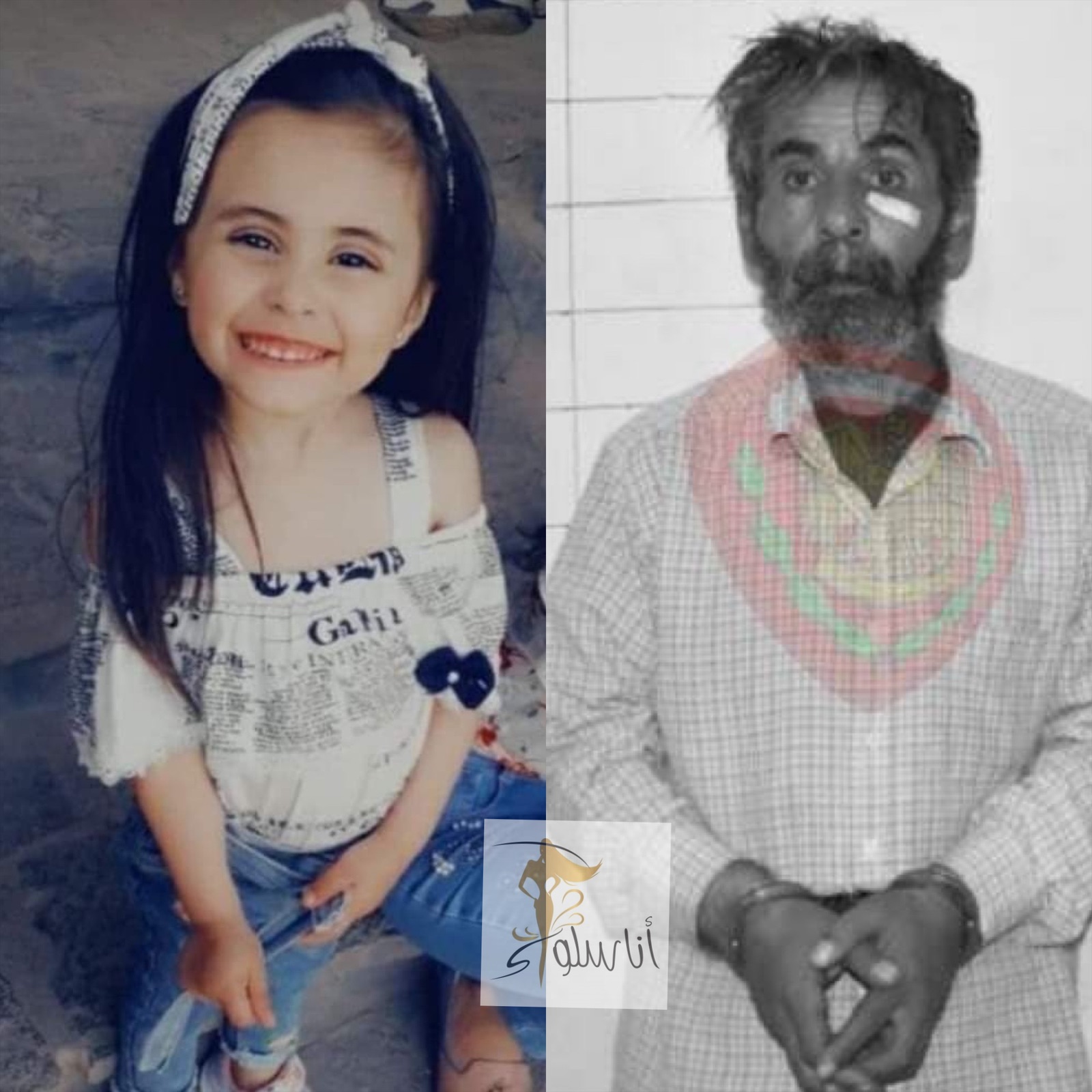Uncovering the nature of life in Umm al-Quwain, Tell Abraq, 2500 years ago

A delegation from the Ministry of Culture and Youth visited the site of Tell Abraq and the archaeological temple of al-Dur in the emirate of Umm al-Quwain, to find out the latest developments in excavation and excavation work carried out by a team of archaeologists at the site that was re-excavated by the Department of Tourism and Antiquities in Umm al-Quwain, in cooperation with its local team and the mission Italian since 2019.
The delegation included His Excellency Mubarak Al-Nakhi, Undersecretary of the Ministry of Culture and Youth, and Mr. Ali Al-Shaali, Assistant Undersecretary for the Heritage and Arts Sector - in charge, and reviewed the excavations that revealed the presence of permanent settlement at the site of Tell Abraq in the period from 2500 BC to 300 AD, and this was clearly evident in the archaeological layers. The archaeological discoveries at the site also highlighted a statue made of stone in the form of a man, the first of its kind in the UAE, and another small statue in the form of a gazelle made of bronze with precision and high craftsmanship, making Tell Abraq a major reference for archaeologists in southeastern Arabia as a whole.

Commenting on the ongoing excavations and excavations in Tell Abraq, His Excellency Mubarak Al-Nakhi, Undersecretary of the Ministry of Culture and Youth, said: The archaeological discoveries in Tell Abraq are an important and invaluable historical source for the nature of the inhabited area, from the third millennium BC to the Iron Age. He added that archaeological discoveries are historically and scientifically important, and that the Ministry of Culture and Youth is working to support archaeological excavations in the region.

Al-Nakhi stressed that the ministry, through its interest in archaeological and heritage sites, aims to create an integrated system for national heritage and enhance national identity, and works to collect, document and archive cultural heritage in order to preserve it, and develop and develop the capabilities of workers in the field of heritage, noting that the Ministry pays attention to the antiquities sector. especially as it relates to human identity, history and existence; Which leads to highlighting more important historical facts.
During the tour around the site of Tell Abraq, the delegation listened to a detailed explanation from the excavation team about the archaeological site, where a circular building of a large fortress in the form of terraces built of sea stones was revealed, and a circular tomb dating back to the Umm al-Nar period that includes a complete skeleton of a girl She is 18 years old, in addition to a number of various archaeological finds, including pottery jars, soft stone vessels, arrow heads, daggers, ivory combs, and other important artifacts. The Department of Tourism and Antiquities in Umm Al Quwain revealed the discovery of a number of archaeological statues in the form of human figures and animals such as camels and horses, dating back to between the first and second centuries AD.
The delegation also visited the archaeological site of Al-Dur; Which is one of the largest archaeological sites, and a witness to the ancient civilization and cultural heritage in the region, which confirms the history of the region and the links and links between the various regions.





